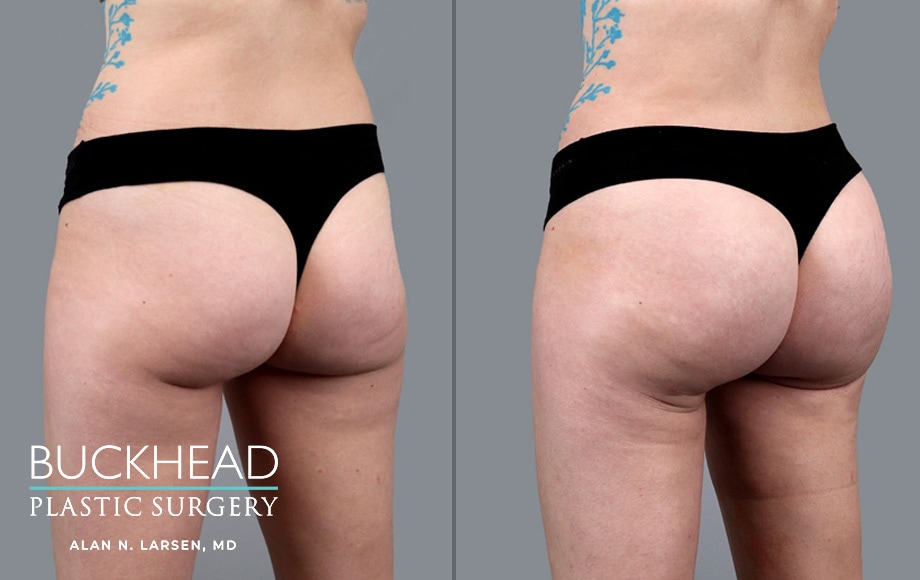Many patients struggle with a fear of anesthesia. The idea of being “put under” or “put to sleep” can raise anxiety levels for sure. It’s a common and perfectly normal reaction to the idea of a surgical procedure. One of the best things you can do to combat this fear is to educate yourself about how anesthesia works, the risks, and what you can do to minimize those surgical risks. At Buckhead Plastic Surgery, we take your safety and comfort seriously.
Dr. Larsen is a double board-certified plastic surgeon with years of experience across a decorated career. He has carefully vetted and chosen every surgical team member based on their reputation for excellence in surgical skills and patient comfort and care.
When you book your free consultation, please feel comfortable to voice all your questions and any fears you might have. Our talented team will address them and help you feel peaceful and optimistic about any surgical procedure you might be experiencing. At Buckhead Plastic Surgery, we are here to help you become the best version of yourself, and we want you to feel safe and comfortable from start to finish.
Debunking Common Causes for Fear
The first step in dealing with fear is acquiring knowledge. When you learn about what anesthesia is, how it’s used, and what it does, it removes the mystery that leads to fear. It’s an important way to shine a light on the metaphorical monster under the bed.
The two most common fears associated with anesthesia are not waking up or not being fully asleep. The likelihood of either of those happening is extremely rare. The possibility of someone dying of anesthesia is less than 1 in 100,000. Or, to put it differently, a 0.0001% chance. For perspective, your odds are twice as likely you’ll die of a tornado than from anesthesia; we know that’s a strange example. Still, it illustrates how unlikely this situation is.
The second most common fear associated with anesthesia is you won’t be given the proper dosage, and will be “awake” during surgery. This is also extremely rare. Even in the rarest cases, patients experience something called “intraoperative awareness” which is being described as patients having a vague recollection of surgery in a dreamlike state.
Even this rare condition is usually the cause of patients not receiving enough anesthesia due to an extreme underlying health issue. An example would be trauma victims receiving life-saving surgery in a medical emergency where there isn’t enough time to administer anesthesia properly.
3 Common Types of Anesthesia
Understanding the different types of anesthesia and how they work can give patients peace of mind before undergoing surgery. General anesthesia is what most patients think of when they think of surgery; it’s where you are completely asleep. Regional and Local, however, are often mixed up; let’s take a look at how they work.
- Local- Local anesthesia only numbs a small area for treatment. It is the mildest form of treatment. It is typically administered in a cream or injection. Although it would never be used alone for major surgery, it might be used at the site where a nerve block is administered. With this type of anesthesia, you are awake and fully conscious.
- Regional- This type of anesthesia blocks the nerves in a particular region of the body. However, this does not affect the brain or your breathing. With this method, you are also conscious but commonly given sedatives to fall asleep. This method is frequently used because it works as a middle ground between local anesthetic and general anesthesia. Standard surgical procedures that use this type of anesthetic are knee replacement surgeries or hip surgeries.
- General- General anesthesia is what is administered for longer, more serious surgeries. This involves medicine that is given through an IV to make you fall asleep and keep your body relaxed during the procedure. General anesthesia is used when patients need to be completely unconscious for their procedures. Breathing tubes are put in place to assist with breathing.
Understanding the Risks of Anesthesia
With all medical procedures, your personal medical history, your lifestyle, and your general health will make you more or less at risk during surgery. Knowing some common risk factors that can affect patients undergoing anesthesia can help you to better prepare for your surgery. Here are some common risk factors
- Alcoholism or drug abuse
- History of seizures
- A medical history of adverse reactions to anesthesia
- Smoking
- Abnormal blood pressure
- Allergies to specific medications
- Taking medications that can increase bleeding
- Diabetes
- Being overweight or obese
- Sleep apnea
- Bleeding or clotting disorders
If any of the items on this list apply to you, your care team at Buckhead Plastic Surgery will work with you. Whatever your surgical needs are, rest assured that the professionals at Buckhead Plastic Surgery have your best interests at heart. We will make sure you are well cared for during all your procedures.
How to Lower Your Risk
Even though, as we’ve illustrated, the risks of all types of anesthesia are incredibly low. It’s always best to be as prepared as possible before any medical procedure. This is why we suggest you invest in Pre-Hab.
What is Pre-Hab and How Does it Work?
Pre-Hab is steps you can take to get you physically, mentally, and environmentally ready for surgery. It can be customized to the surgery you are undergoing as well. Excellent examples of prehab are quitting smoking, getting to a healthy weight, and doing exercises that will target key muscle groups and movements needed for a safe and speedy recovery.






